Learn about propagating houseplants to add even more beauty to your indoor garden or to share with family and friends.
One of the best things about growing houseplants is sharing them with others and having others share their plants with you.
There are many ways to propagate houseplants. What works well on one plant may not work as well on another.
For me, half the fun of propagating houseplants comes with experimenting techniques and seeing what works.
Tips for Propagating Houseplants
Propagate by Cuttings
Taking leaf or stem cuttings is an easy way to propagate many plants including vining plants such as pothos or string of pearls.
Propagating Cuttings in Water
Many plants will grow roots in water. In the photo above I placed a few cutting from a Christmas cactus that I over-watered and was beginning to die. The pebbles at the bottom of the glass allow the roots to grow in water without having to submerge the whole stem.
However, many plant cutting can simply be placed directly in a glass of water. Plants such as scented geraniums will produce roots in a matter of days while others may take weeks. Just make sure that you provide clean fresh water about once a week.
Once you have a nice root system growing you can plant your cutting in soil. Make sure to keep the soil a bit on the wet side and provide a humidity dome (plastic baggie works well). This will help the roots that have been living in water acclimate to the soil.
Propagating Plants in Soil
Many plants will do well planted directly in soil. The string of pearls shown above has grown roots simply by setting some cuttings on top of moist soil.
This Cebu Blue pothos was planted with a few leaves. I did place it in a plastic baggie with a small area open to provide humidity. Once I could tell that it was growing, I removed it from the bag and watered weekly.
Here's a current picture of the same plant.
Small vines like this string of hearts can be pegged in with a bit of floral wire. This will allow you to fill up the pot providing a fuller overall plant.
Propagate by Divisions
Often when you buy a larger plant in the nursery you can see that there are actually several plants in one pot. You can take advantage of this by removing the plants, gently separating them and planting them up in their own pot. One large Monstera plant yielded seven individuals shown above.
Propagate by Planting Offshoots
Lastly, one of the easiest ways to propagate plants is by removing and potting up offshoots. Often referred to as pups or babies, you can dig up these little guys and create a new plant.
The Pilea Pepperomia above puts out little babies at the base.
It's a good idea to make sure that the offshoot is big enough. Two of the three above are on the small side and will take a long time to grow into a good size.
Repot them using a good well draining soil. Place the new pot in a baggie and leave a little part of the top open for airflow. Once the plant starts to grow, open the bag fully and consider removing the pot to a regular spot in your indoor garden.
Here's a pretty Silvery Ann Pothos cutting my daughter gave me. It was only 2 leaves to start. I placed it in water first for about 2 weeks. Then I planted the cutting in a pot and placed it in a baggie with about 2 inches of the top open. As it grew I opened the baggie fully. Now it looks ready to come out of the bag and grow on its own.
Watching a plant fill out and grow from a division, or cutting is a very rewarding experience.
The next time you visit someone who has a plant or two that you admire, ask them for a cutting. Chances are good that you will be able to grow it on your own.
Click Here to Save to Pinterest!




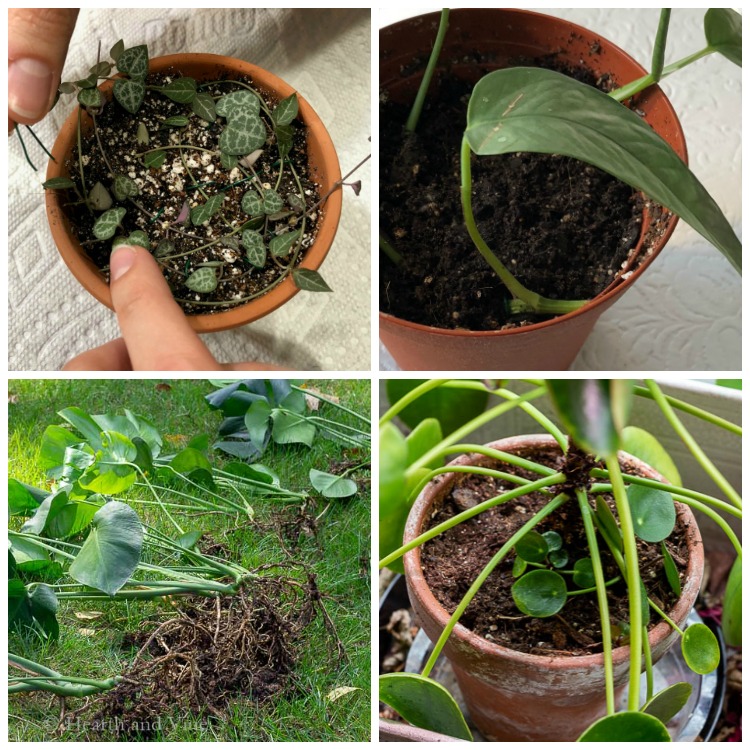

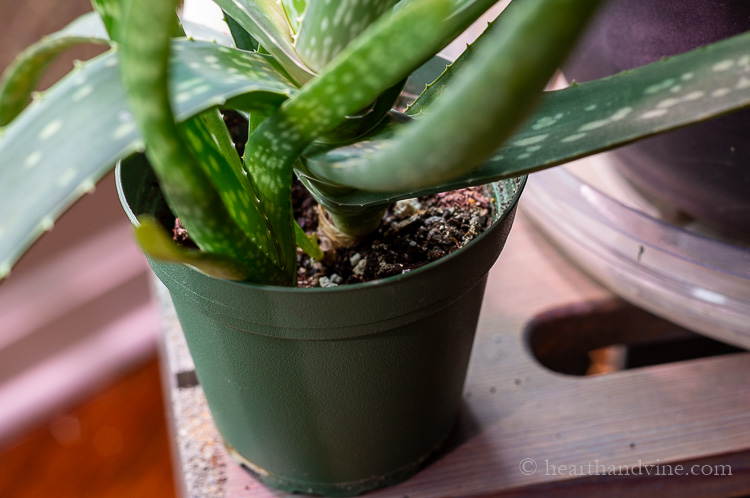
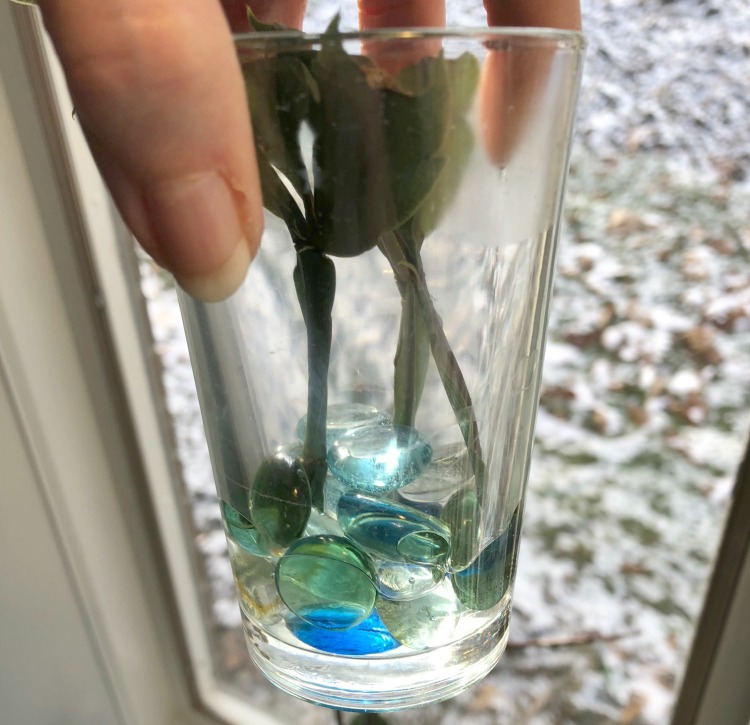
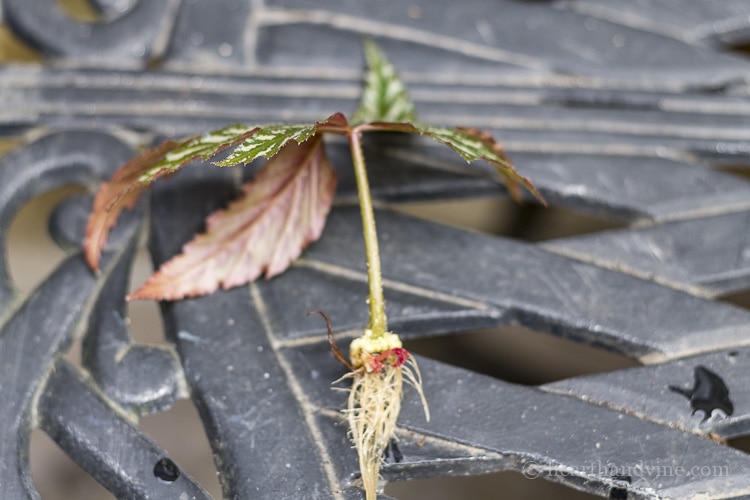
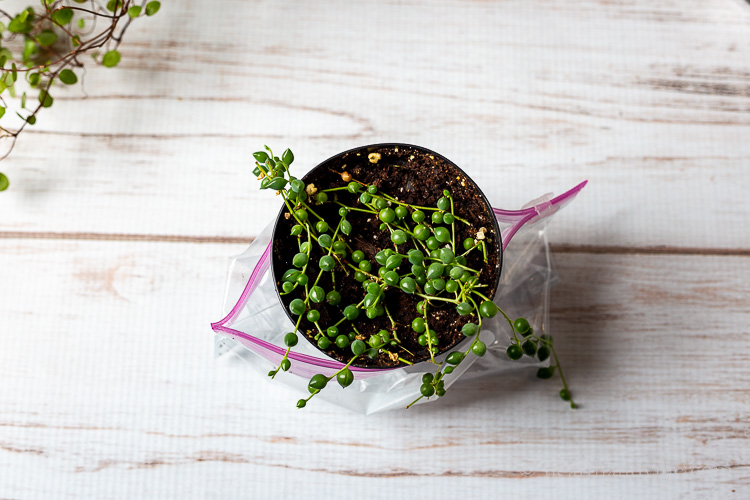
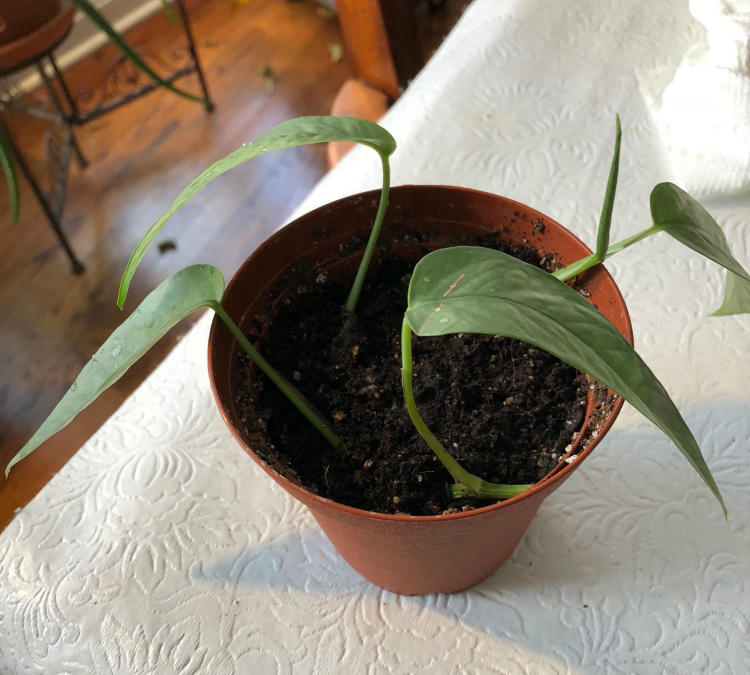
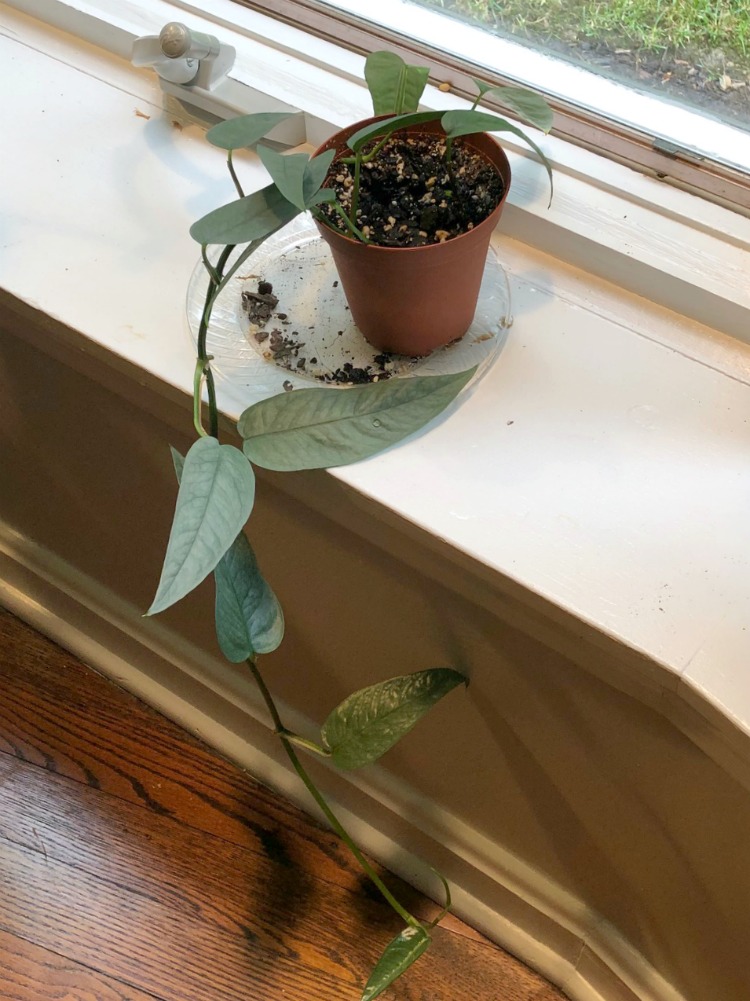
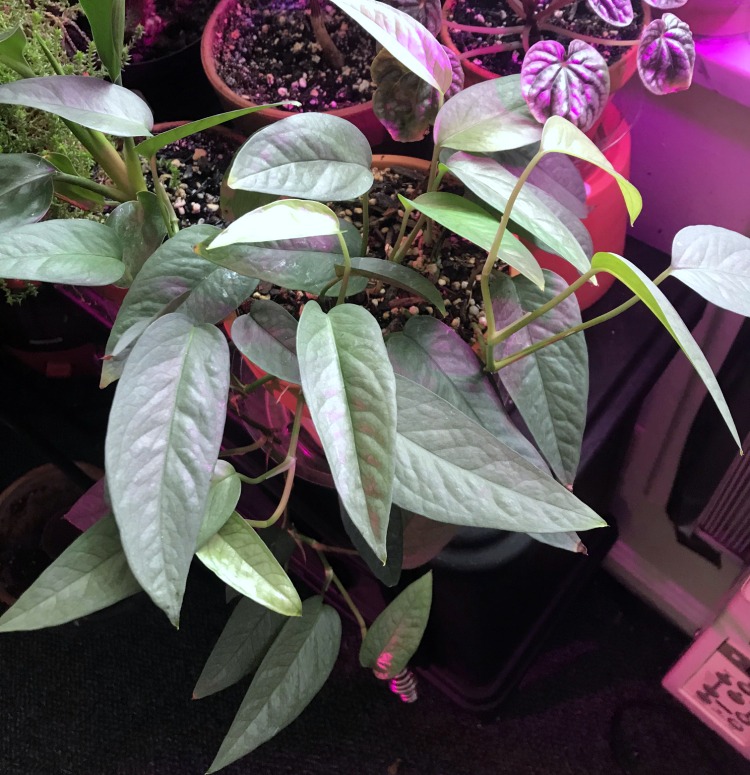
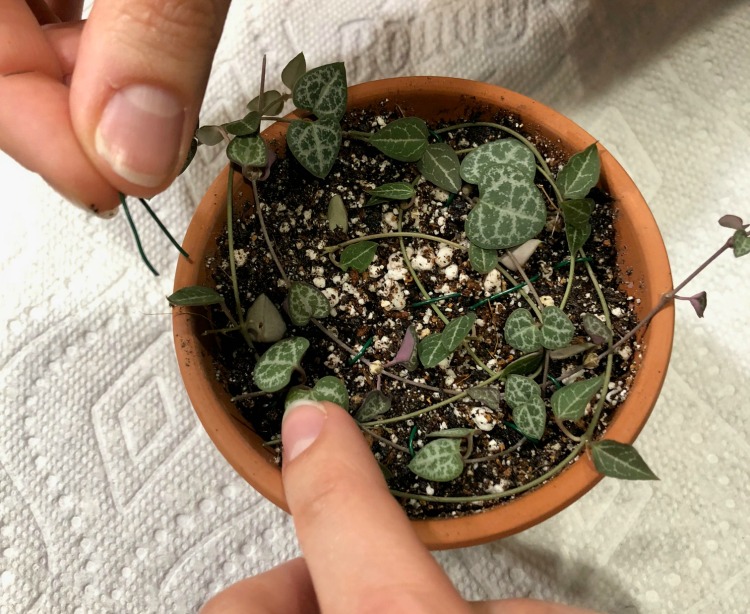
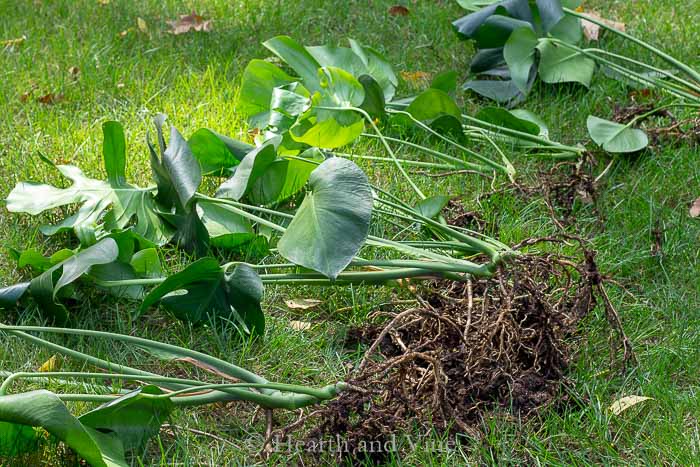
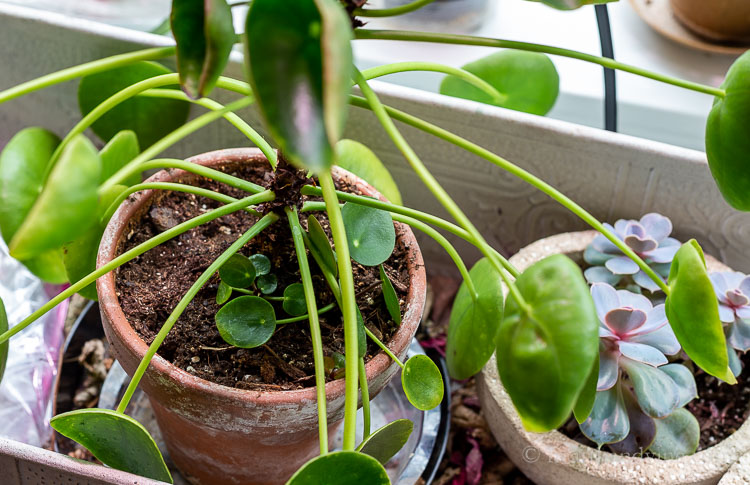
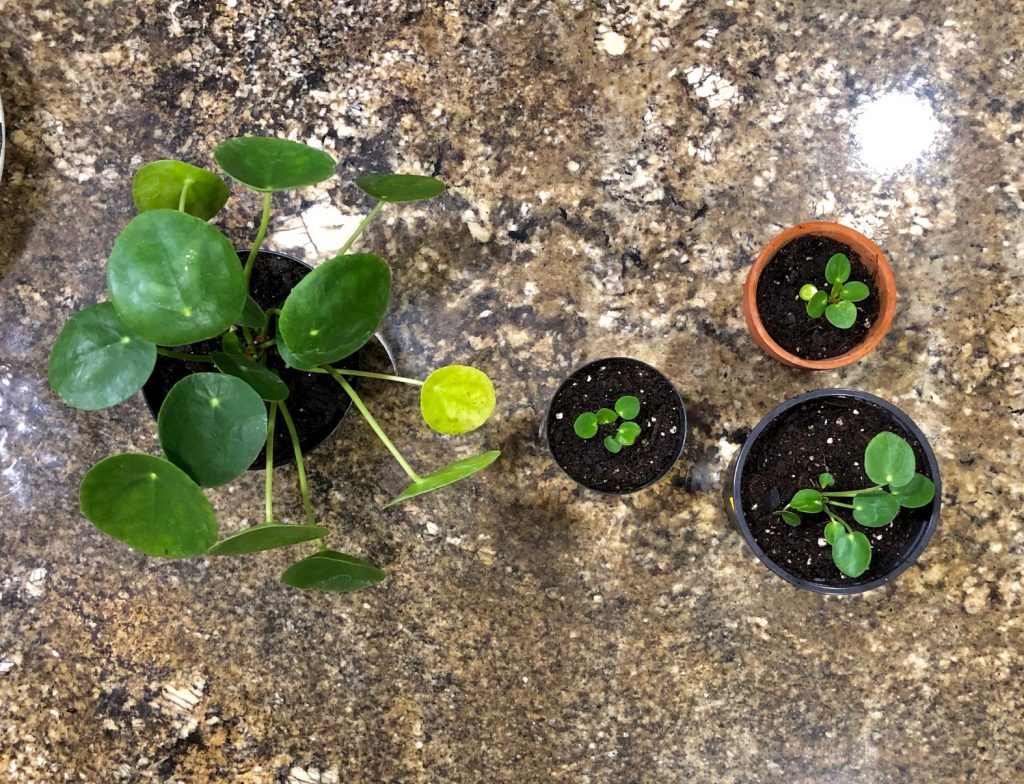
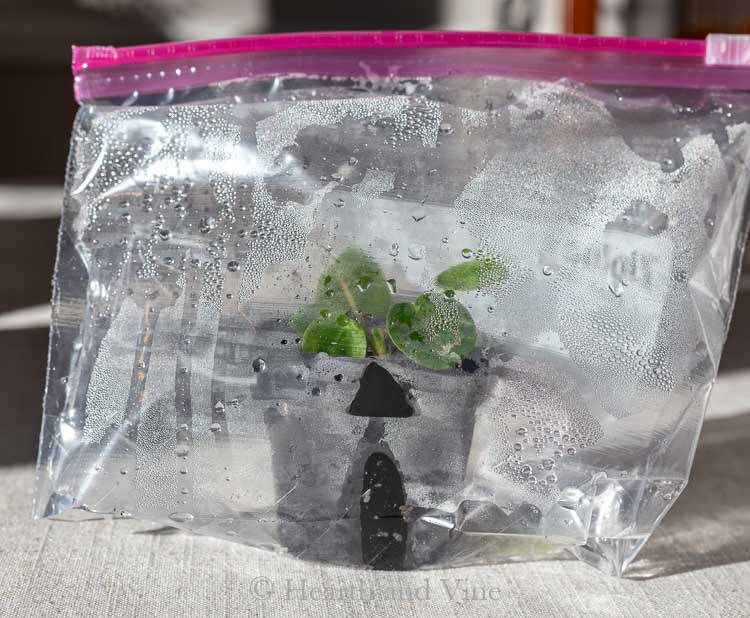
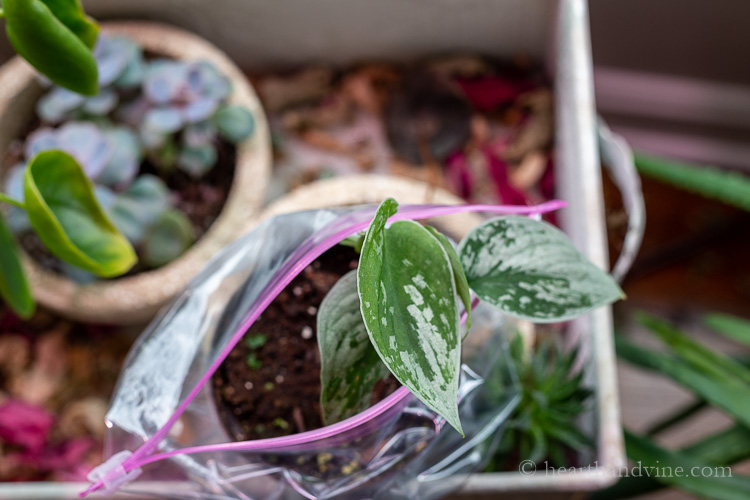

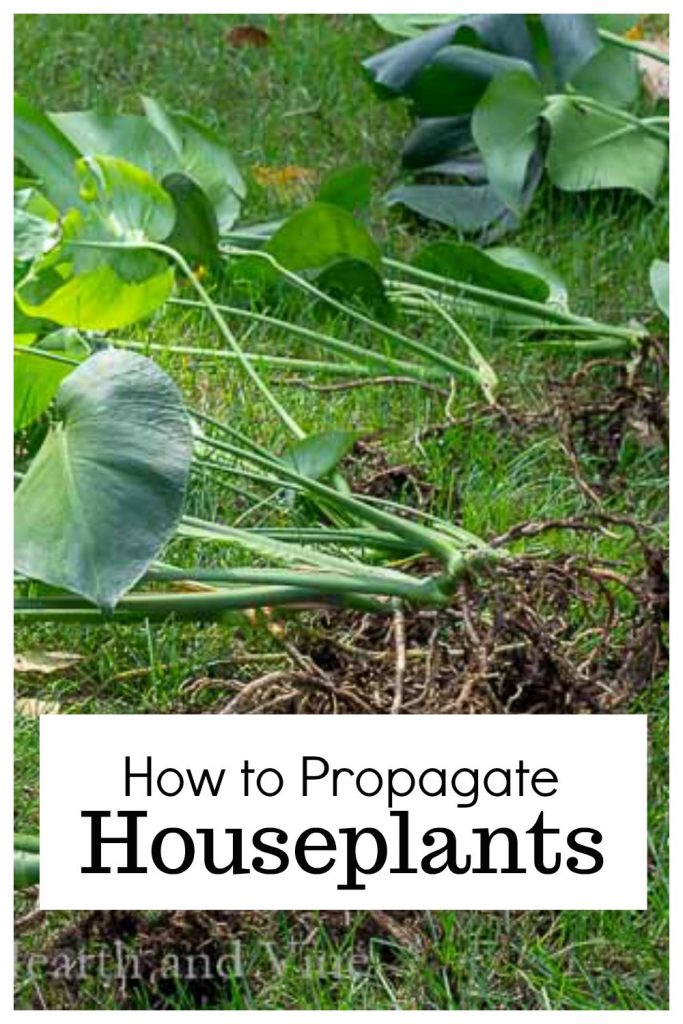
Susan M.
Thanks for sharing all these ways to split houseplants. I'm finding it really helps my budget to split plants then trade, rather than always buy!
Patti Estep
Yes Susan, it's a great way to get new plants without spending and money.
Barbara Chapman
Hello Patti! My mother was and brother Frank is really good at making houseplant cuttings grow. Until recently I have always had trouble with growing houseplants (except violets) but I am ready to try again. 🙂 Just this past week I used the splitting technique with an agapanthus outdoors and split it into two plants, but it easily could have become three, four, five or more. They do well crowded (and bloom massively) anyway which is how my old garden in California had become when we left. Trying that again here in Texas!
Thank you for the reminders on how to work with cuttings and pinning plants down to create more plants,
Happy spring hugs to you,
Barb 🙂
Patti Estep
Barb, sounds like plant lovers run in your family. Too bad you live so far away or I'd be stopping by for some of that agapanthus.
Kim Purvis
These tips are just what I needed right now! I am waiting on potting soil to be delivered so I can get started moving my small plants to larger pots.
Kim
Patti Estep
Thanks Kim. Glad to hear there are other plant lovers out there.
Michelle | Thistle Key Lane
Great information Patti! The Monstera is one of my favorite plants but I didn't realize it could be divided. Pinning!
Patti Estep
Thanks Michelle. There are a lot of plants that nurseries put together for fuller pots that can be divided. If the division is small it may take a little while to get going but it's a fun way to share costs with a friend.
Michelle Leslie
Thank you soooooo much for this Patti. I can't wait to make a whole bunch of baby plants.
Patti Estep
You're so welcome Michelle. It's a fun hobby!
Deana Landers
Patti, you know this is my favorite subject rooting plants. I love your ideas and especially the part about placing the plants inside the baggy. I never thought of that. Thank you!
Patti Estep
Thanks Deanna. I got the idea from my daughter who is getting her masters in plant biology and so, of course, she is a plant fanatic.